VERY RARE! Original 1903 New York City - Corona & Louona Park - Early 1900's NYC Blueprint Map (PLATE 16)*
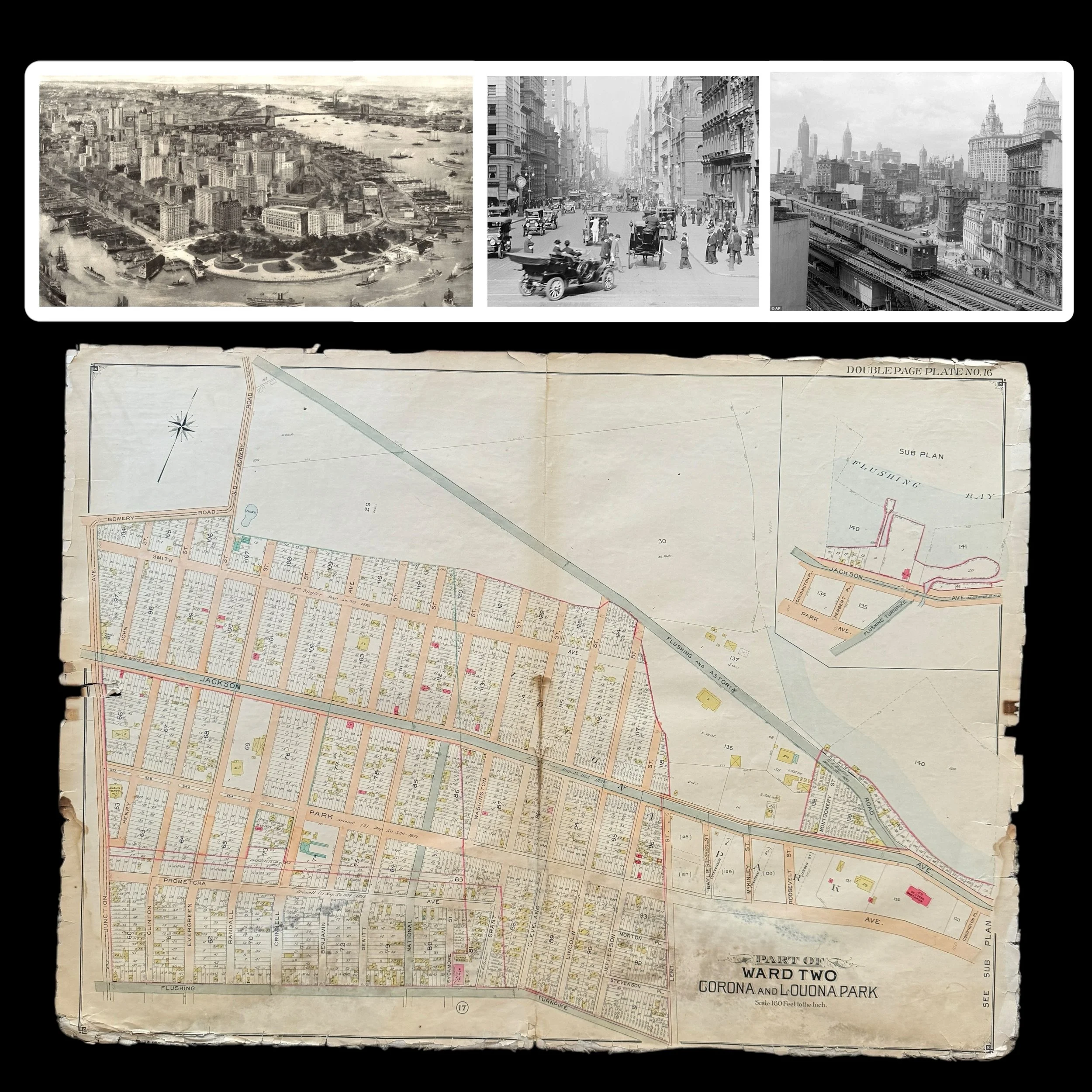
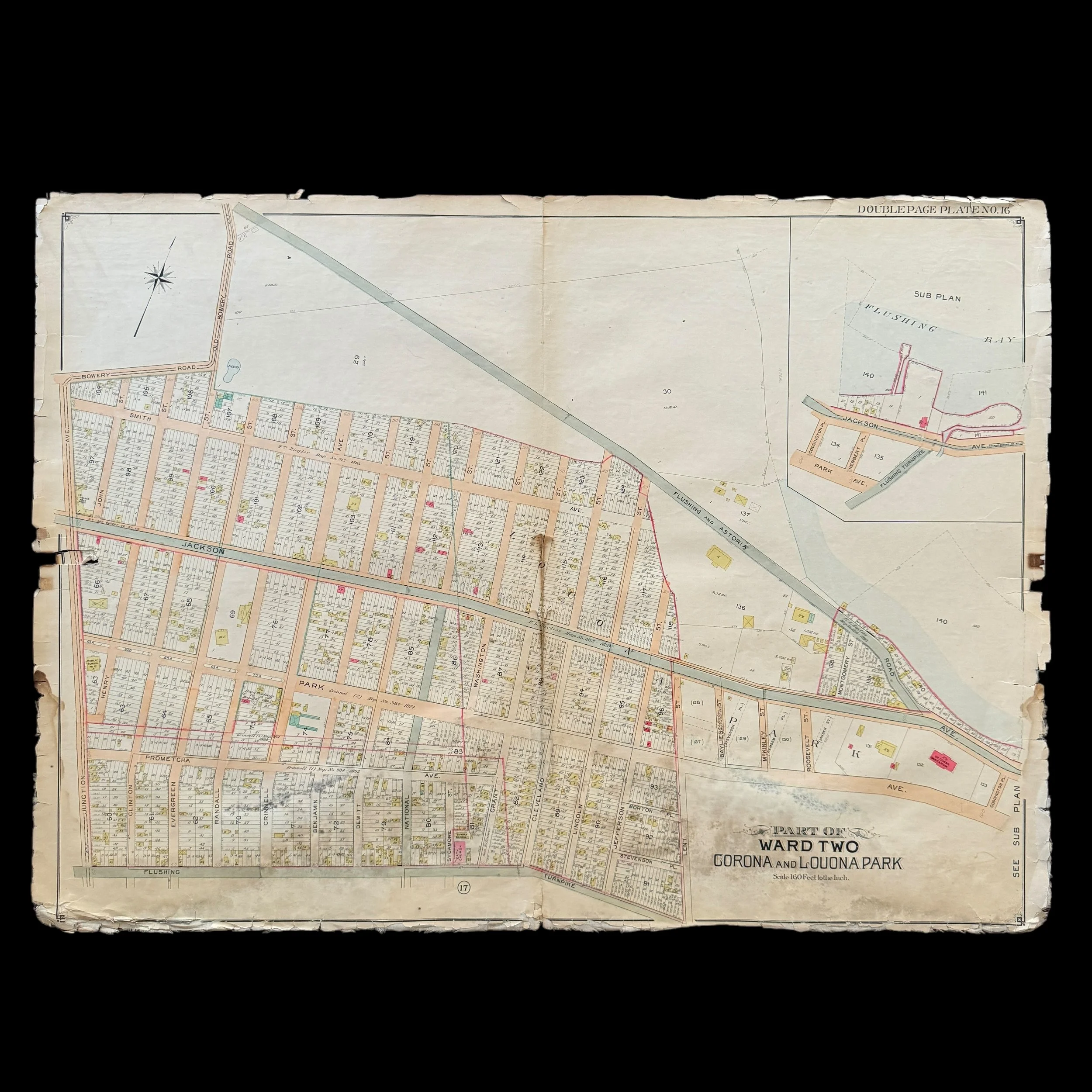
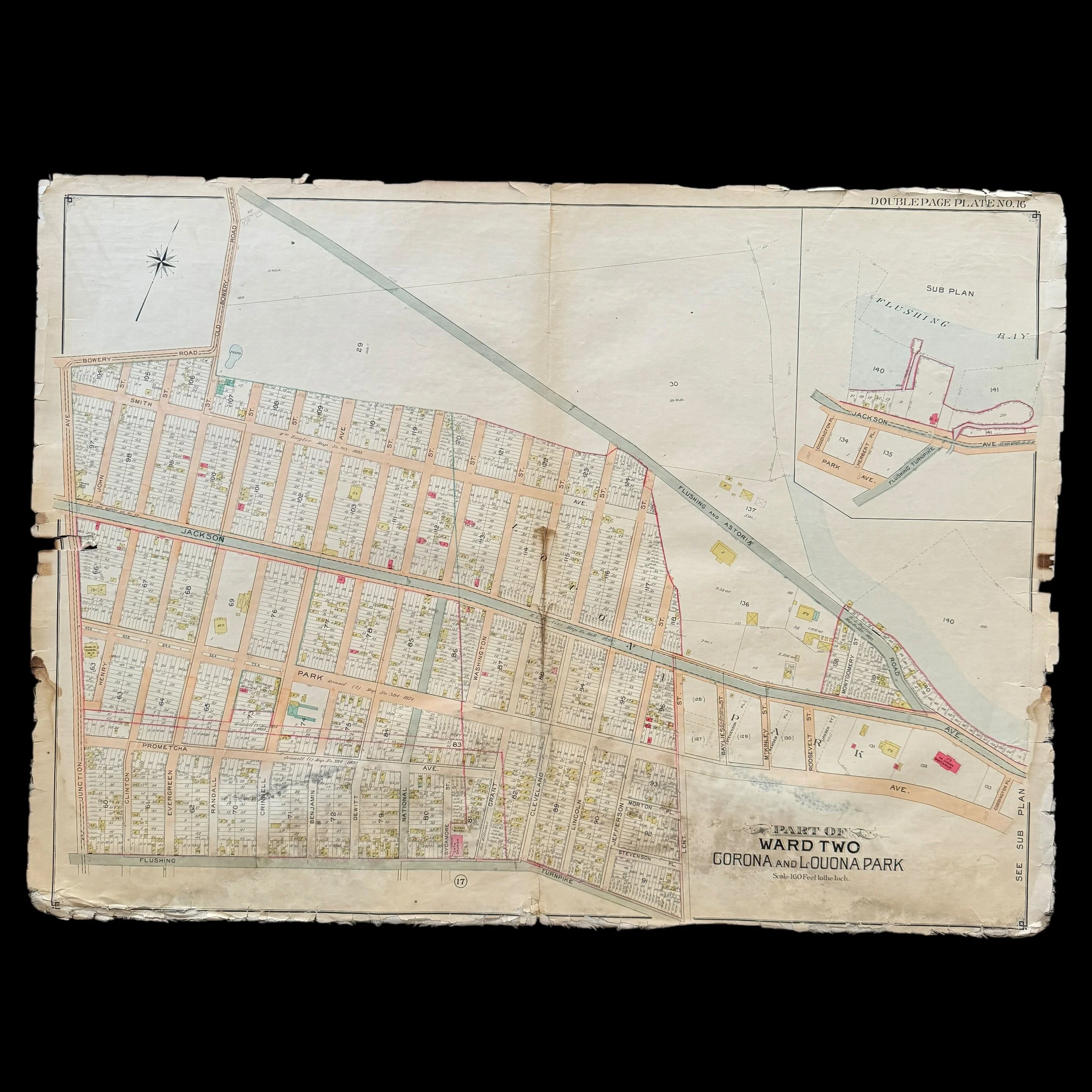

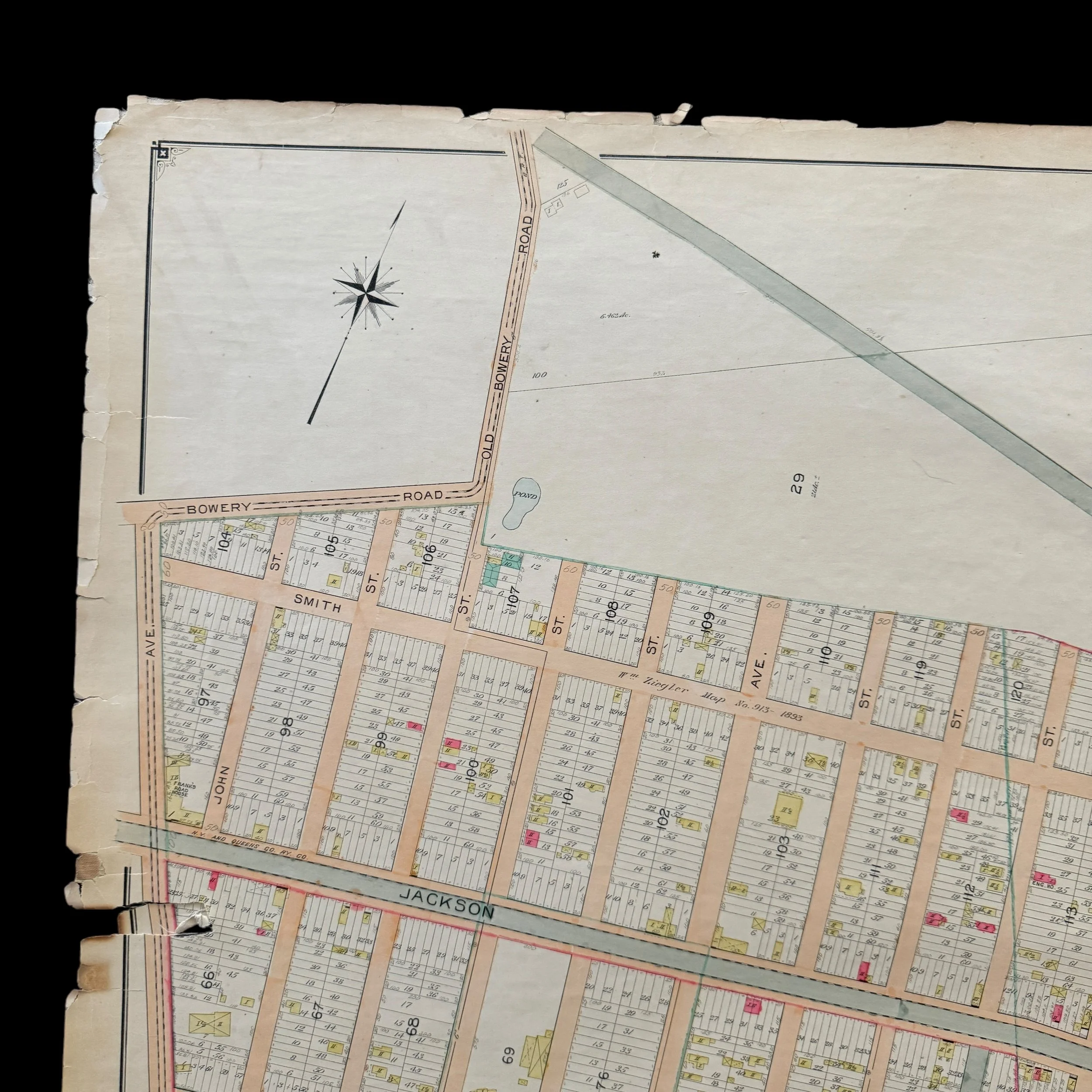

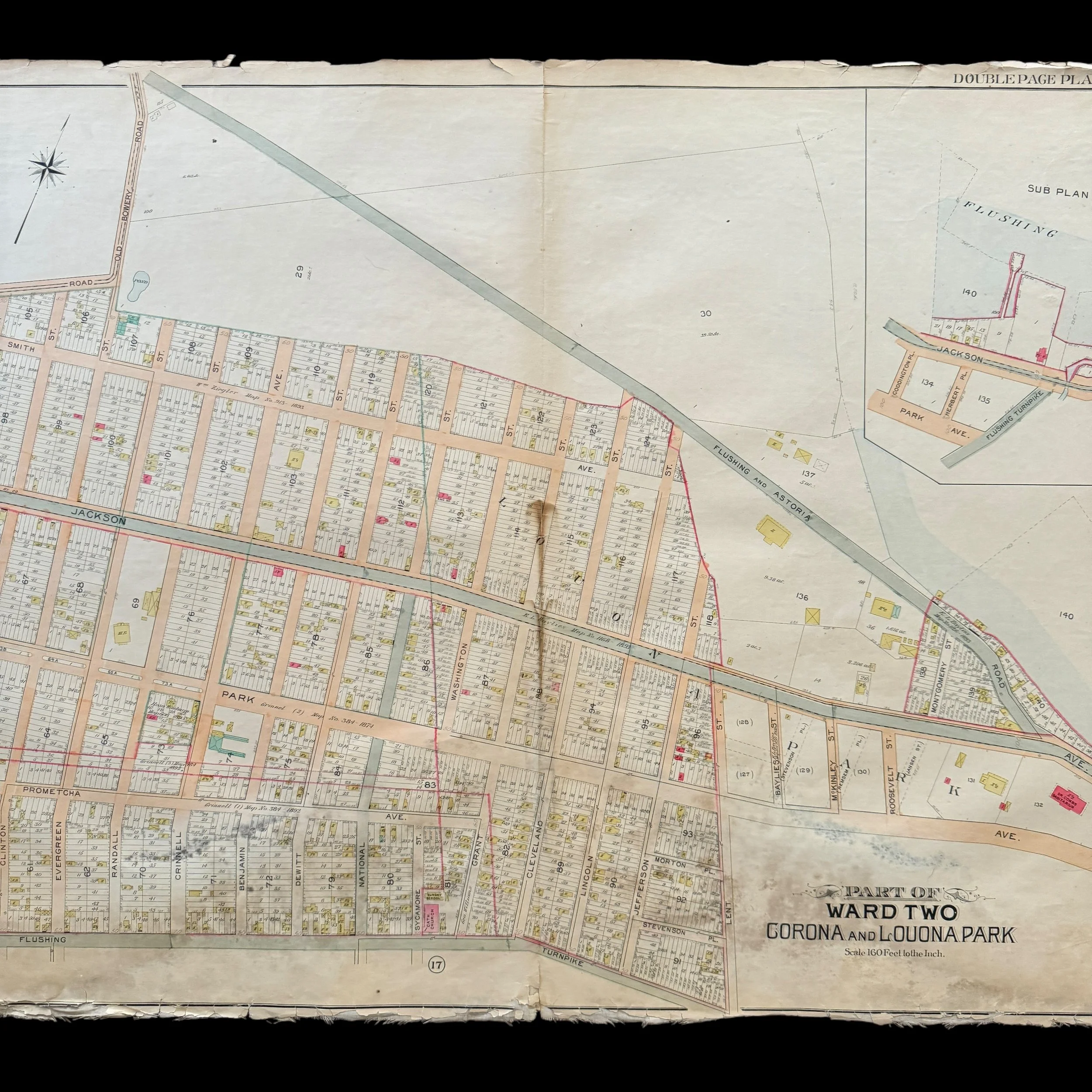
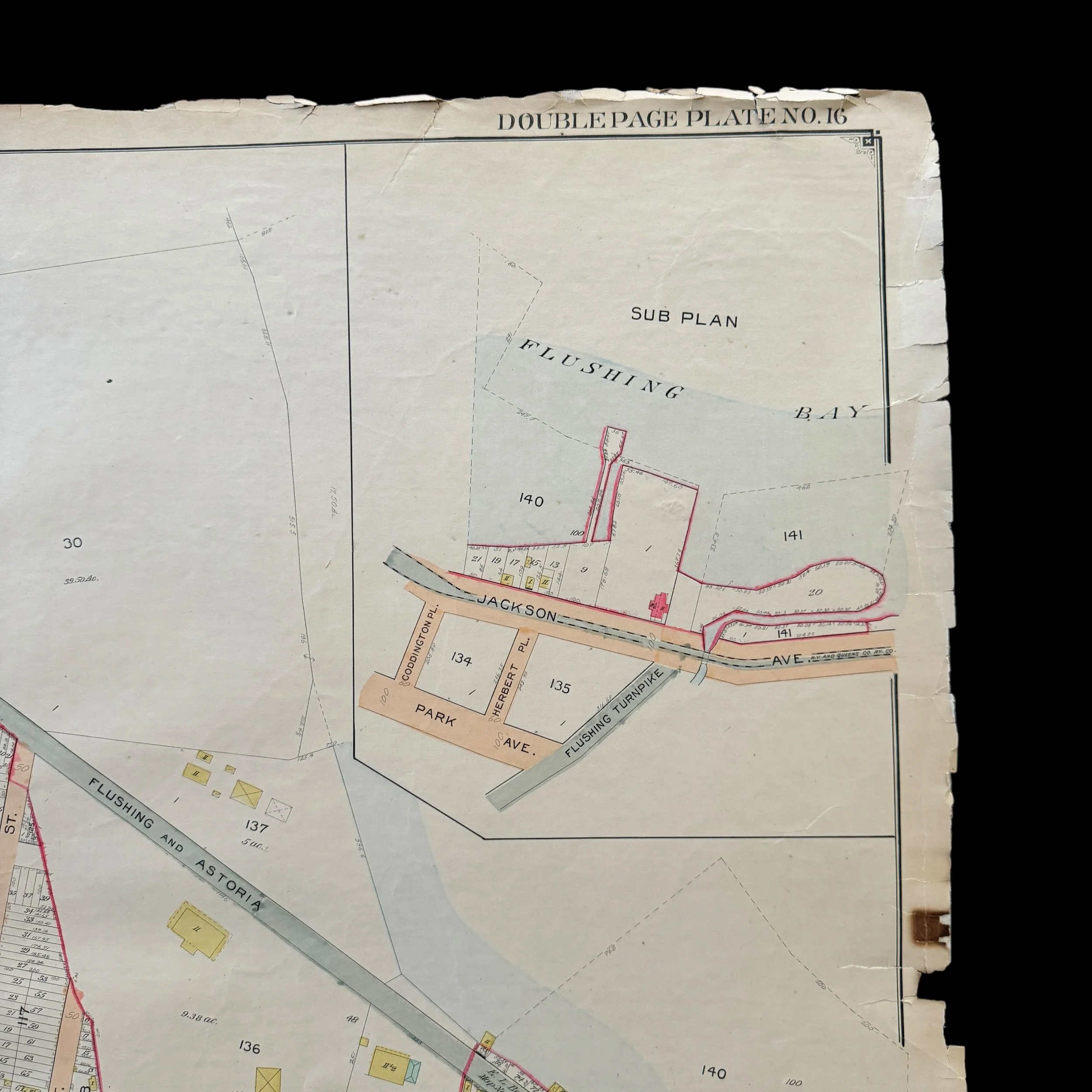
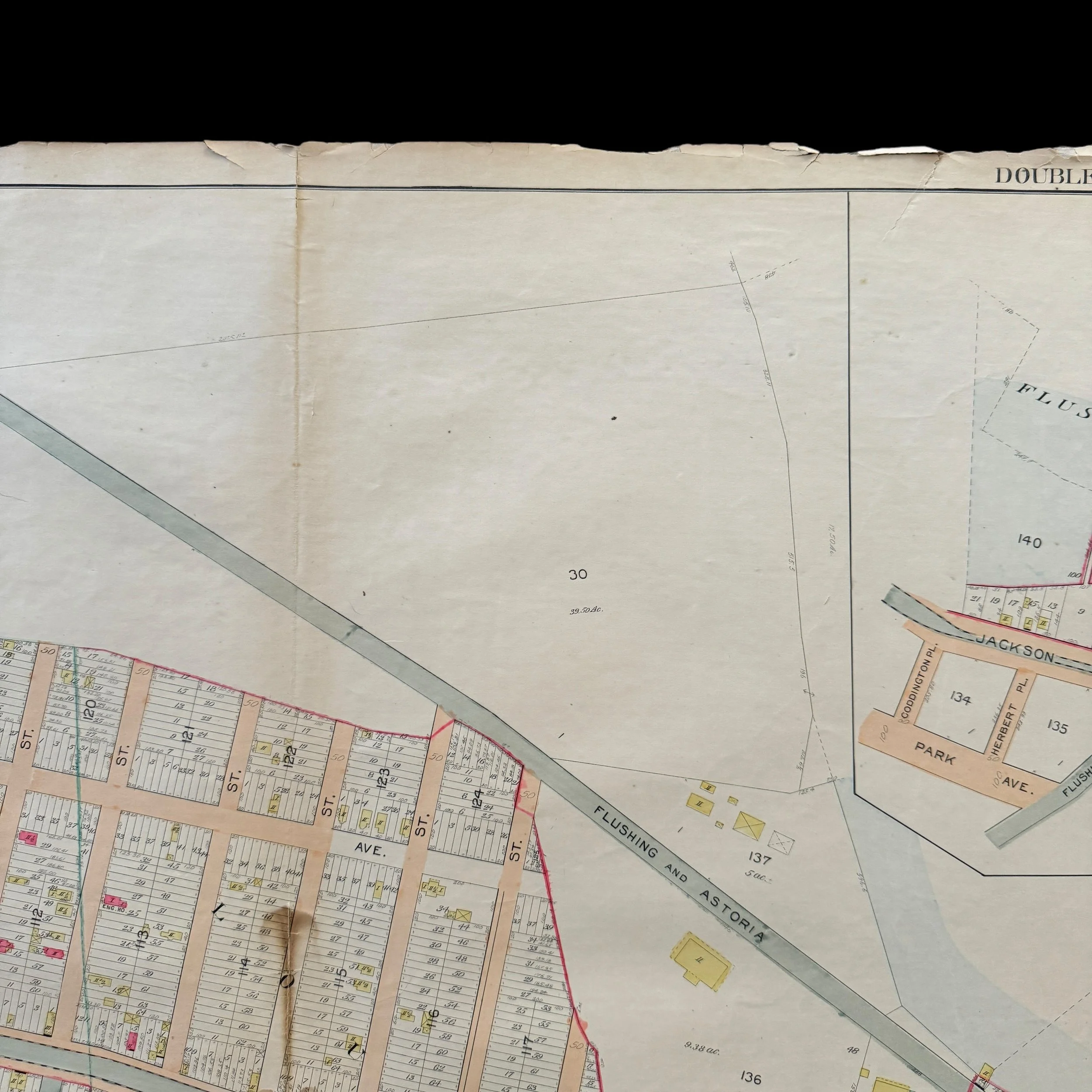
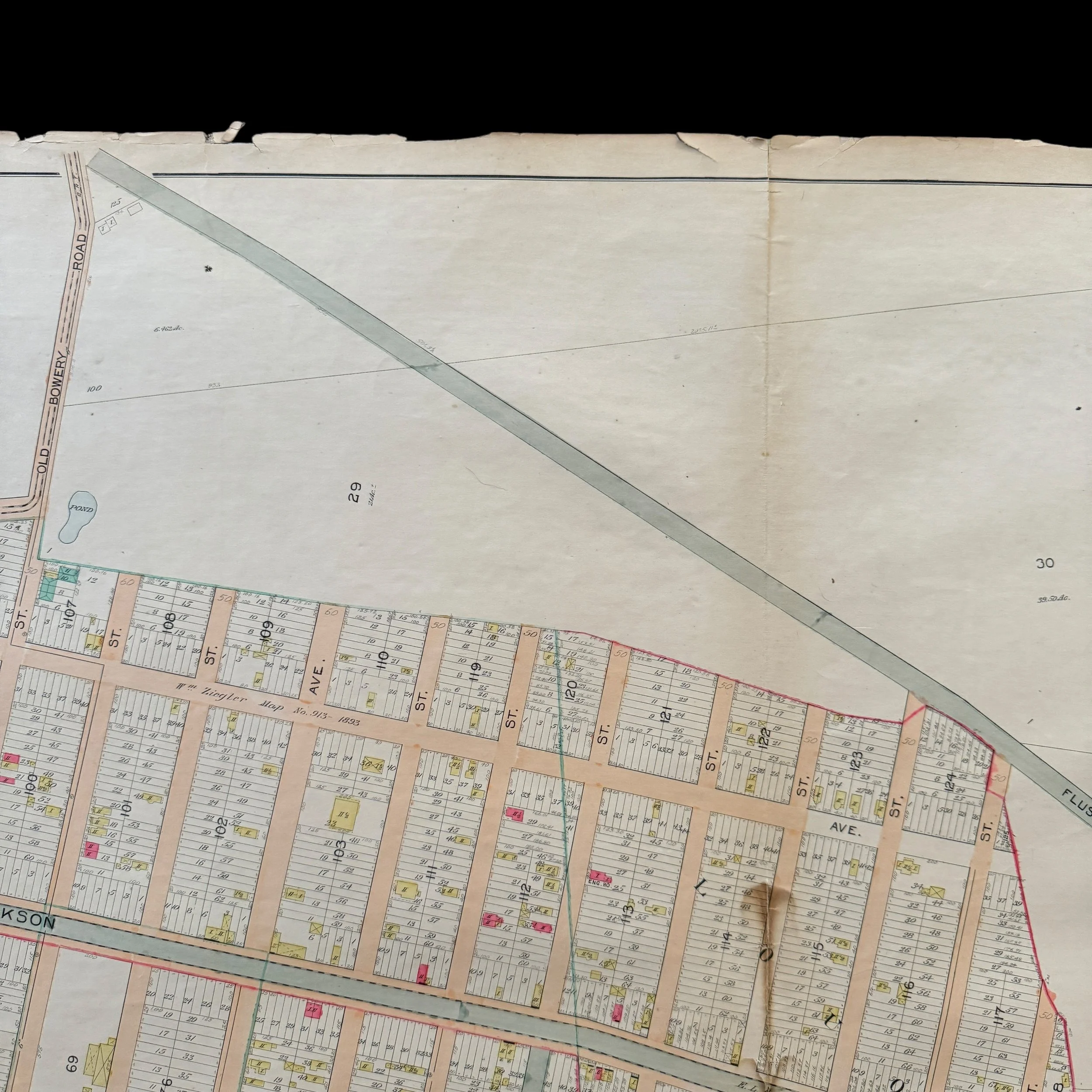
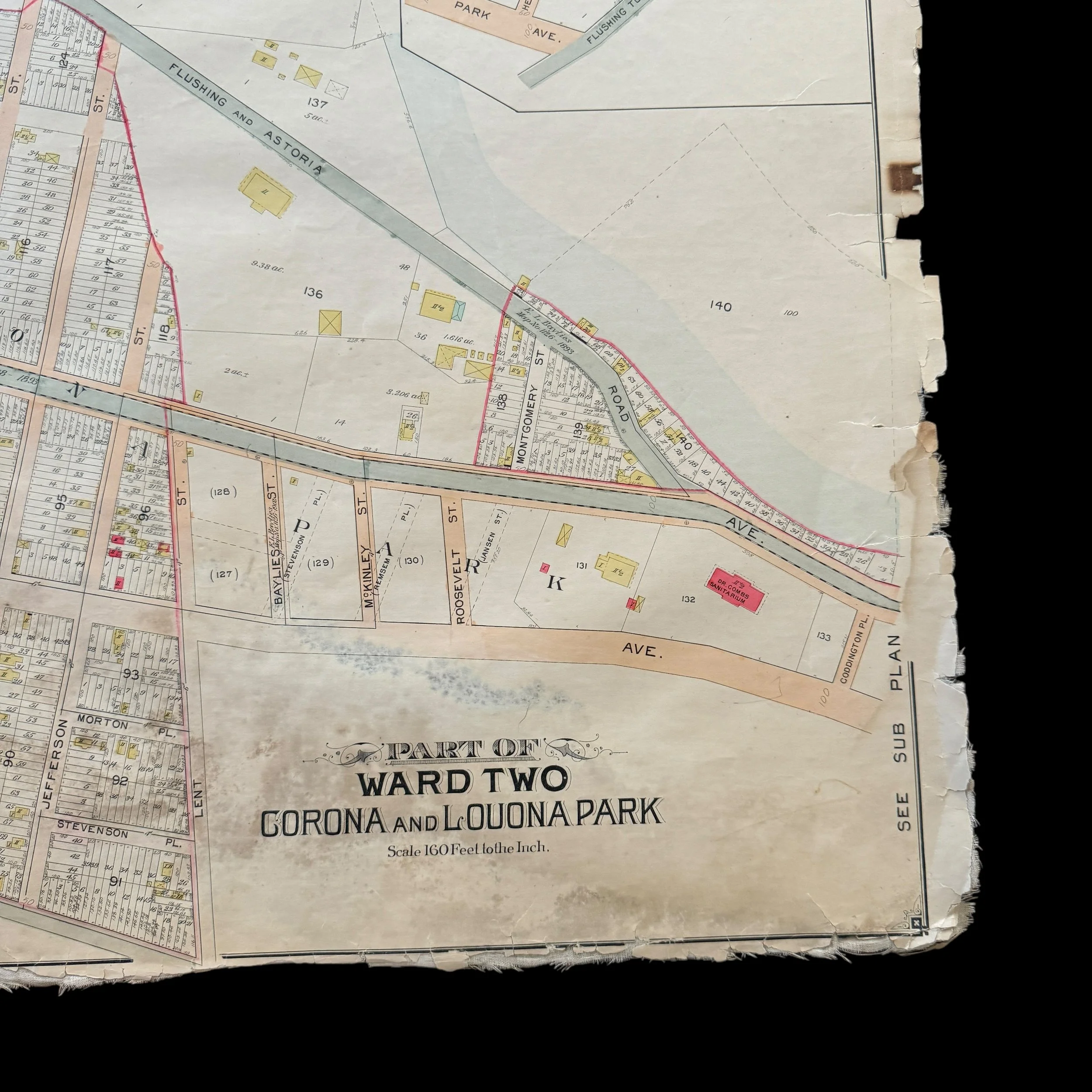
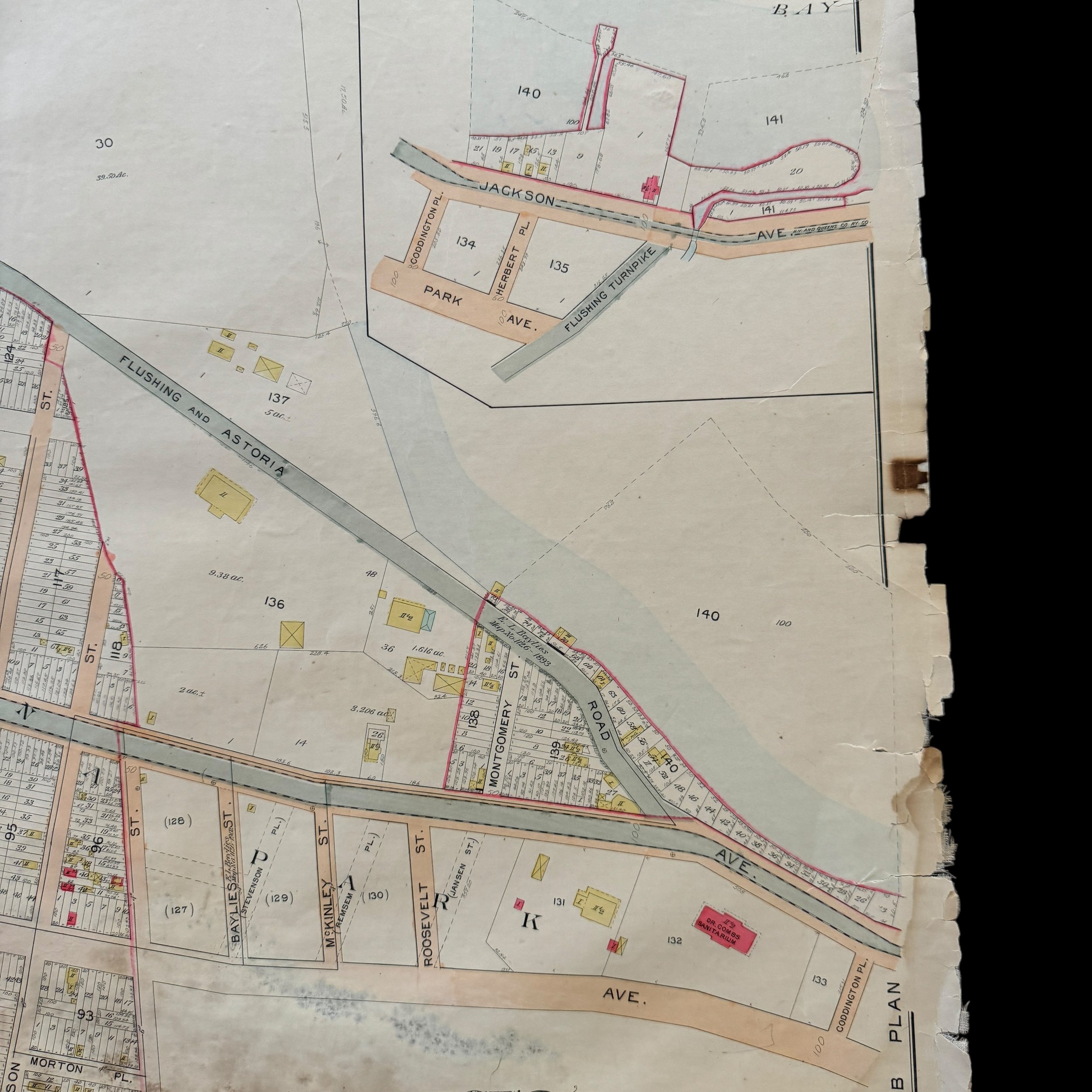
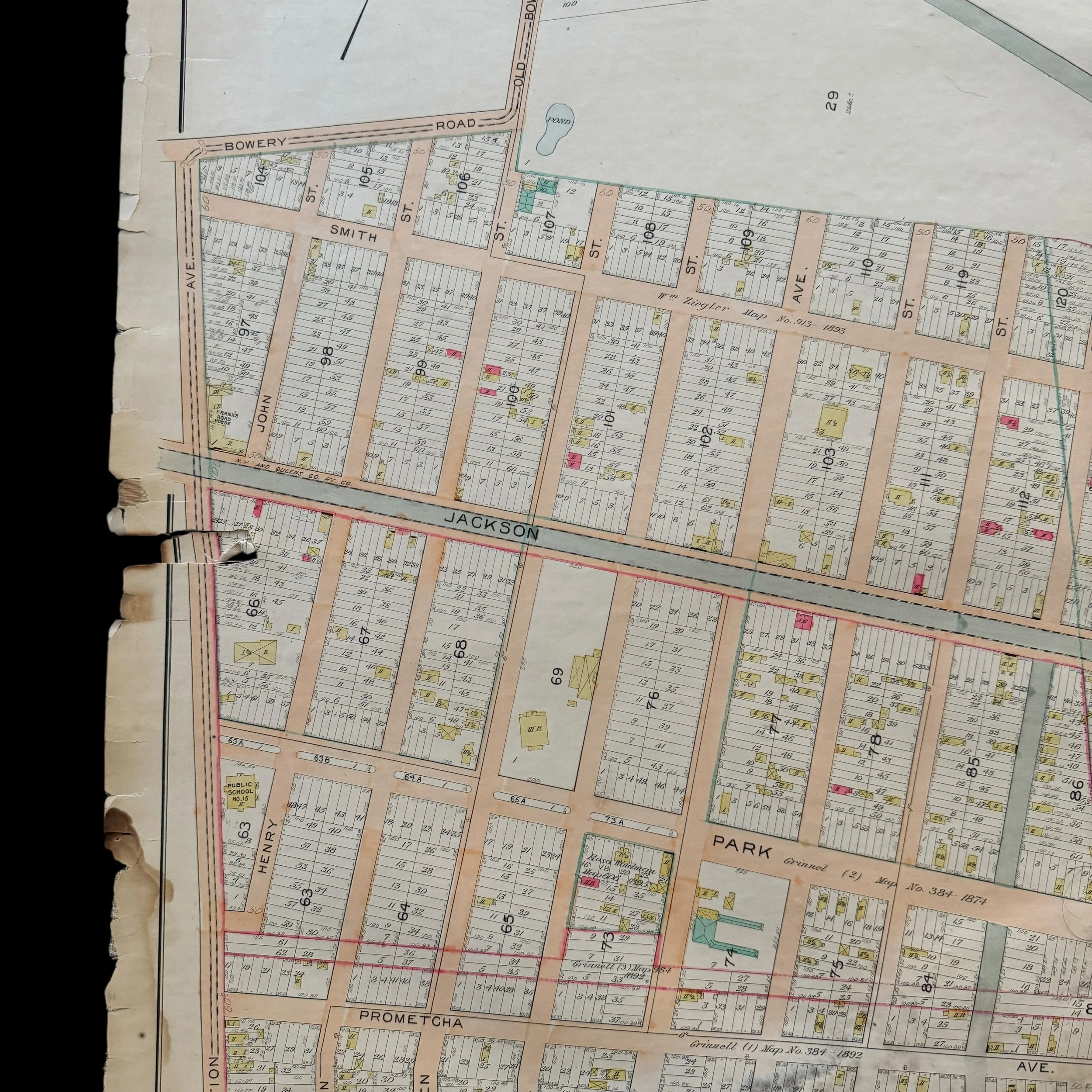
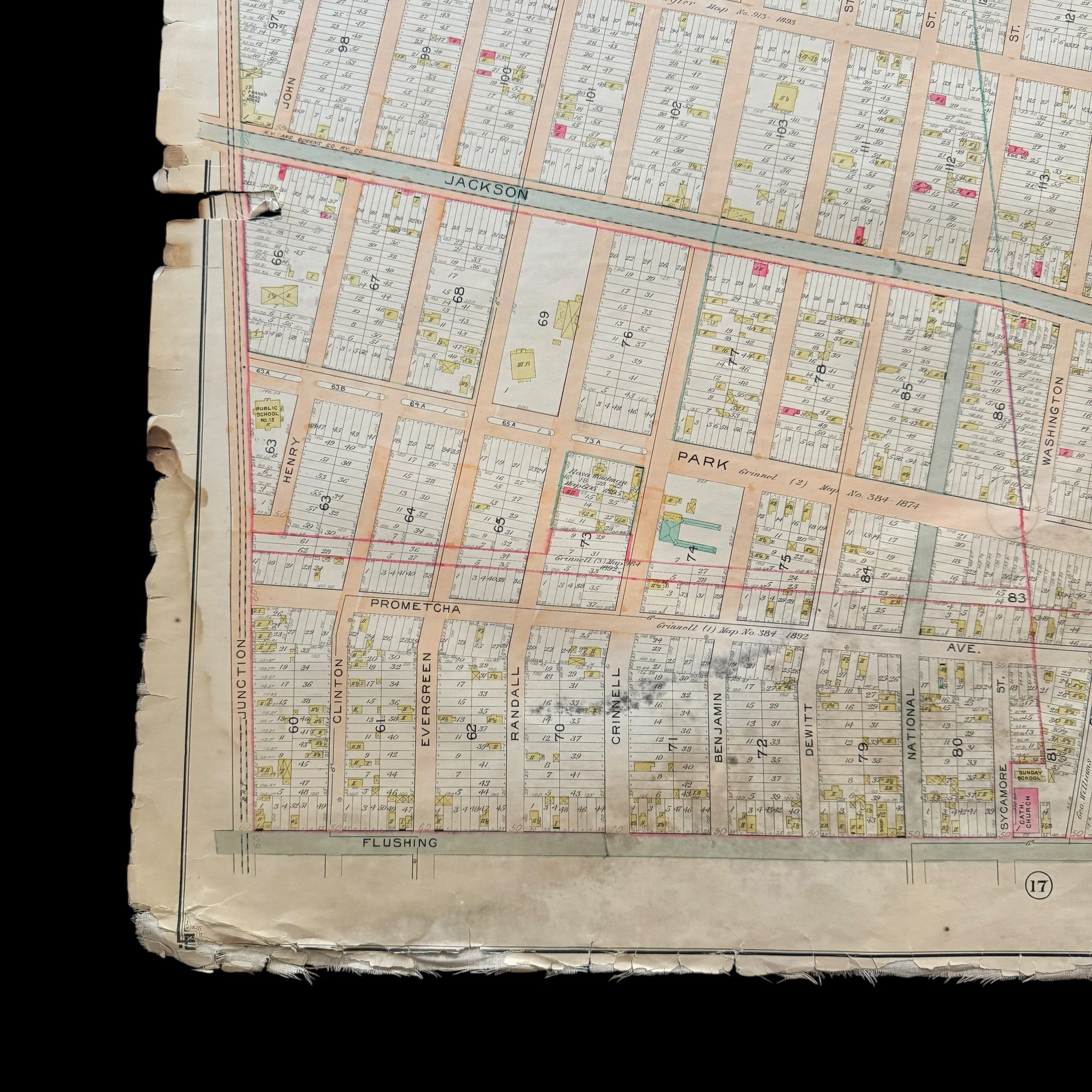
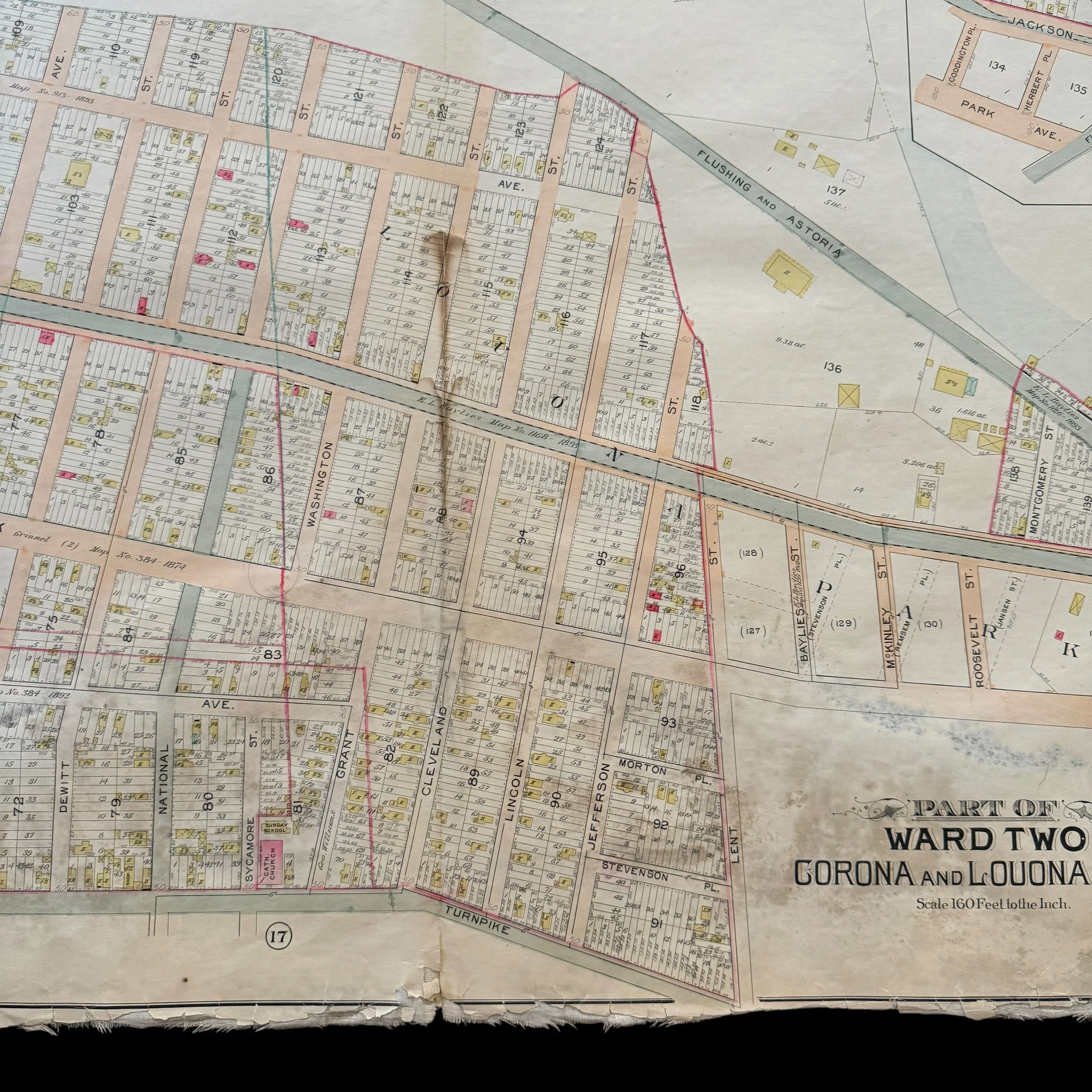
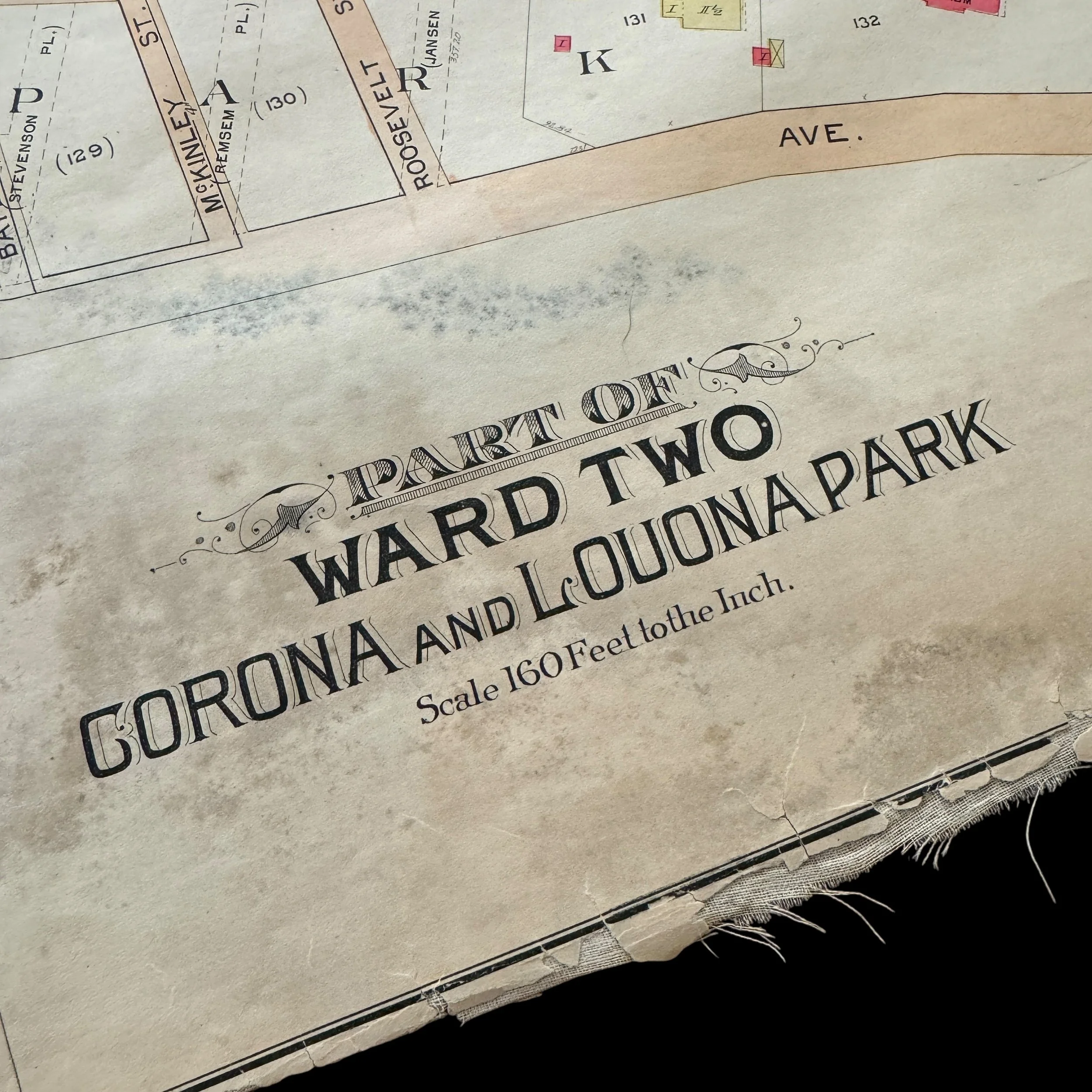



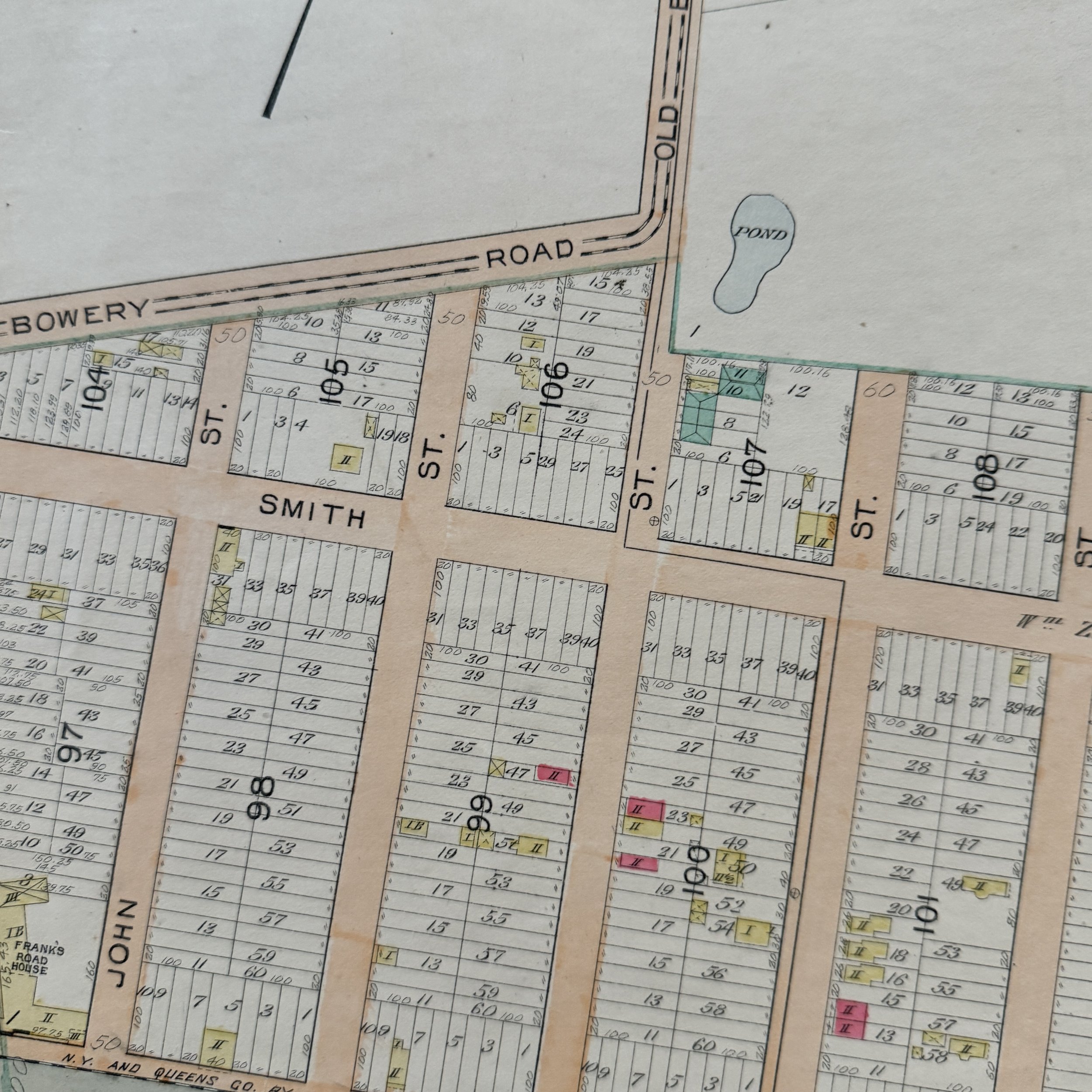



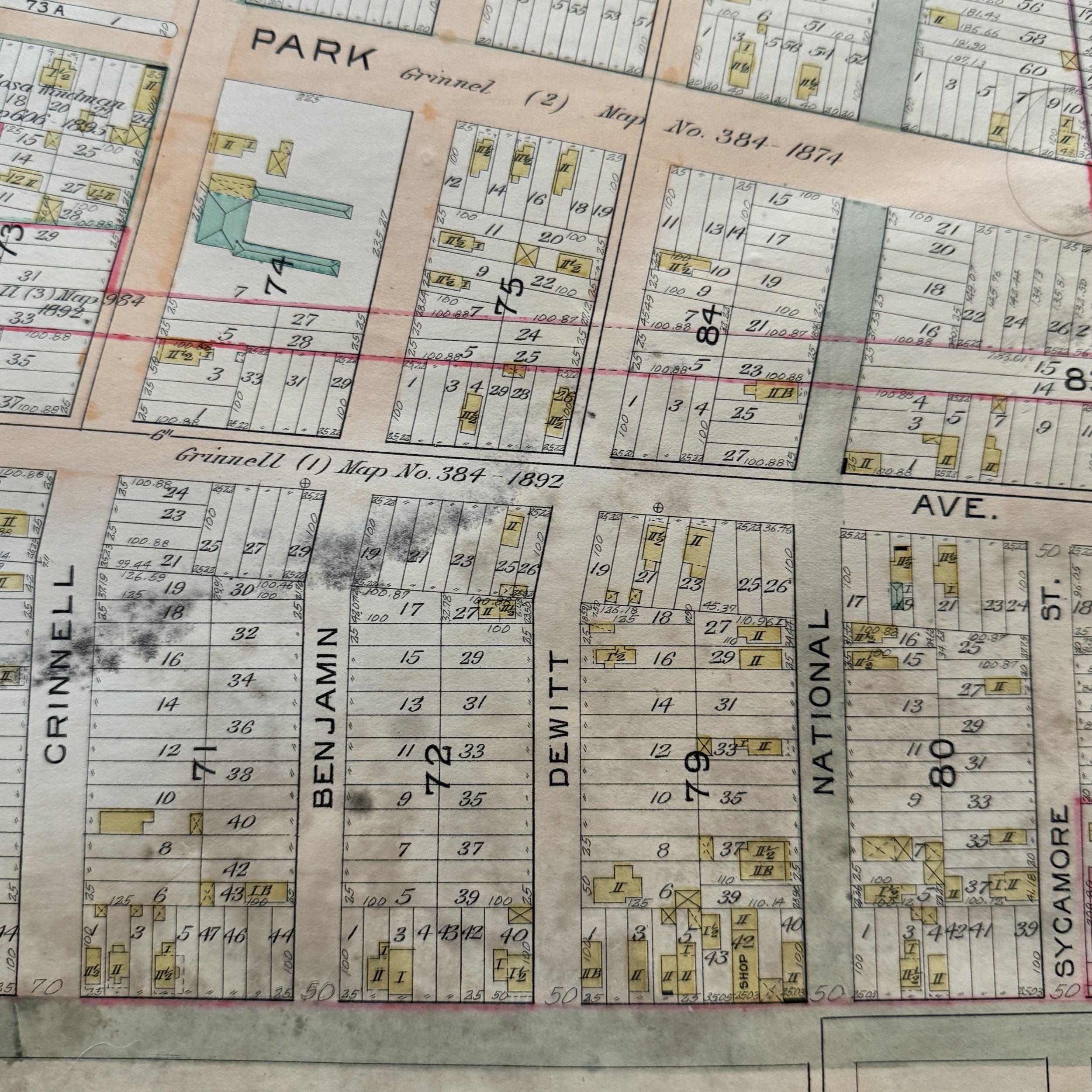








VERY RARE! Original 1903 New York City - Corona & Louona Park - Early 1900's NYC Blueprint Map (PLATE 16)*
Comes with a hand-signed C.O.A.
*This is an extremely rare piece of original early 1900s New York City history that would make a stunning centerpiece in any collection. Framed and displayed, this original 1903 NYC blueprint would not only serve as a captivating conversation piece but also as a tangible link to the city’s past. Its detailed craftsmanship and historical significance make it perfect for anyone passionate about New York City's rich architectural and urban development history. Whether featured in a private collection, office, or historical space, this rare blueprint is sure to become a treasured heirloom that celebrates the evolution of one of the world's greatest cities.
Size: 27 × 37 inches
Dated: 1903
Place: New York - Brooklyn - Queens
Publisher: E. Belcher Hyde
Features: Jamaica Ave., Old Bowery Bay Road, Woodside Ave., Middleburg Ave., Van Buren St., Lowery St.; Including Bragaw St., Harold St., Jackson Ave., Pomeroy St., Washington Ave., Rapelje Ave.]; Sub Plan; [Map bounded by Van Pelt St., Harold St., Bragaw St.; Including Lowery St., Van Buren St., Middleburg Ave
This extremely rare, museum-grade artifact from early 1900s New York City is an original 1903 blueprint titled “Ward Two - Corona and Louona Park” A historic gem, this heavily used and marked blueprint was created by the renowned cartographer and publisher E. Belcher Hyde, whose detailed real estate and property maps of New York City and Long Island in the late 19th and early 20th centuries are revered for their precision and historical significance.
At more than 100 years old, this original NYC blueprint is part of a larger series that meticulously documented various sections of New York City, including Queens, Brooklyn, and other boroughs. These maps captured the rapid urban development during a time of major transformation for the city.
In 1903, NYC was at the heart of significant change, having been incorporated into Greater New York City just five years earlier in 1898. The area was transitioning from a largely industrial and residential neighborhood into a more integrated part of the bustling metropolis. Detailed blueprints like this one were vital to guiding that development, serving as indispensable tools for real estate professionals, city planners, and developers.
E. Belcher Hyde's blueprint for NYC offered a wealth of information, from property boundaries and building footprints to street layouts, lot numbers, and ownership details. The blueprint also included railways, waterways, and industrial zones, making it an essential resource for planning new developments and infrastructure. These blueprints were not just practical but legal documents, often used to resolve disputes over property lines and land use.
Hyde’s attention to detail and accuracy in cartography ensured that his blueprints reflected the rapidly changing landscape of New York City at the turn of the century. Today, the 1903 blueprint is a valuable historical artifact, offering a detailed glimpse into the urban planning and development of Long Island City during this pivotal era.
Maps published by E. Belcher Hyde are now considered some of the most important historical documents of the time, providing an unparalleled snapshot of New York City’s growth, land use, and infrastructure at the height of their transformation into a global metropolis.
This is truly a once-in-a-lifetime opportunity to own a one-of-a-kind piece of New York City history. This original 1903 E. Belcher Hyde blueprint is the only known version available for purchase in the public sector. With the majority of these rare blueprints held in private museum collections, opportunities like this are exceedingly rare, making this a unique chance to own an authentic artifact of New York’s early 20th-century development.
Corona, Queens, and the lesser-known Louona Park, New York, provide a fascinating lens into the evolution of New York City’s outer boroughs during a time of substantial transformation. In the early 1900s, these areas, situated within western Queens, were rapidly developing from farmland and isolated communities into bustling residential neighborhoods, driven by transportation advancements, real estate developments, and an influx of immigrants. The history of Corona, in particular, offers insights into New York's suburban expansion, while Louona Park, a name that has since faded from modern maps, represents the smaller, planned developments that played a significant role in shaping Queens during this era.
Origins and Early Development
The origins of Corona date back to the mid-19th century, when it was a predominantly rural area consisting of farmland and small hamlets. The neighborhood was initially known as West Flushing, as it was located near the more developed community of Flushing, Queens. With an agricultural economy, the area produced fruits, vegetables, and flowers for New York City markets. Its transformation began in the late 1800s when real estate developers began to recognize its potential as a suburban retreat for middle-class families seeking a respite from the congested city center. Developers believed that Corona’s location, away from the hustle of Manhattan yet accessible via emerging transportation routes, made it an ideal setting for new housing developments.
Louona Park, meanwhile, appears to have been a small, planned subdivision or residential enclave within or near Corona. The use of such names was common during this period as developers sought to create distinct identities for neighborhoods to attract new residents. Though Louona Park is no longer referenced as a standalone neighborhood, it played a role in the residential boom that began to reshape western Queens at the turn of the century. Real estate companies would often name areas after notable figures or use attractive, park-like names to appeal to buyers who associated such names with suburban tranquility and exclusivity.
The Impact of Transportation on Growth
The early 1900s was a period of rapid expansion for Corona and nearby areas, fueled largely by advancements in transportation. The introduction of the Long Island Rail Road (LIRR) in the mid-19th century made Queens more accessible to Manhattan, encouraging development in areas like Corona. By the turn of the 20th century, the LIRR offered frequent and relatively affordable service from Manhattan to western Queens, making commuting feasible for working- and middle-class families who wanted to live outside the dense urban center.
A transformative moment came in 1917, with the extension of the New York City Subway system to Queens, including a stop in Corona along the 7 line, which connected directly to Midtown Manhattan. This subway expansion made Corona one of the first truly connected suburbs in New York City, and the population of Corona grew rapidly as a result. With increased access, demand for housing surged, and developers responded by building new residential areas, including both single-family homes and small apartment buildings. The newfound ease of commuting drew a diverse array of residents, and Corona began to establish itself as a distinct, flourishing neighborhood.
The Development of Louona Park
Louona Park, though a lesser-known name today, represented an example of the many small subdivisions that sprang up throughout Queens during this time. Real estate developers created these subdivisions to cater to the growing demand for suburban-style living, often giving them unique names and marketing them as distinct communities with a park-like feel, even if they were relatively modest in scale. Louona Park likely consisted of small, planned housing plots designed to appeal to families looking for an affordable, peaceful environment with easy access to the city.
While historical records on Louona Park specifically are scarce, other subdivisions in Queens followed similar patterns: small-scale developments that offered suburban features while maintaining proximity to the city. Developers would advertise the clean air, ample space, and suburban environment that would appeal to urban dwellers, contrasting sharply with the crowded conditions of tenement life in Manhattan and parts of Brooklyn. Louona Park, as part of this development trend, contributed to the suburban fabric that was increasingly defining western Queens.
Cultural and Demographic Shifts
The early 20th century saw significant demographic changes in both Corona and nearby areas, as waves of immigrants arrived in New York and sought affordable housing options outside of Manhattan. By the 1910s, Corona was becoming home to Italian, German, Irish, and Eastern European immigrant families who moved there in search of better living conditions. This diversity helped shape the neighborhood’s character, and Corona quickly developed into a multicultural community with rich cultural offerings.
Louona Park, although smaller, was likely part of this wave of diverse immigrant settlements. Smaller subdivisions within larger neighborhoods often attracted immigrant families who established close-knit communities based on shared cultural backgrounds. The result was a vibrant mix of traditions, businesses, and institutions that served the needs of these various ethnic groups. Churches, schools, and local businesses sprang up to support the residents, many of whom worked in nearby industries or commuted to jobs in Manhattan.
The Role of Real Estate and Architectural Styles
The development of Corona and areas like Louona Park in the early 1900s reflected the architectural and real estate trends of the period. In Corona, single-family homes were popular, often designed in the American Foursquare or Colonial Revival styles, which were commonly used for suburban housing developments at the time. These homes provided modest yet comfortable living spaces with small yards, making them ideal for growing families.
Apartment buildings also started to appear as the population grew, offering more affordable housing options to accommodate the influx of working-class residents. While Louona Park may not have had the same architectural diversity as larger areas, it likely featured similar housing styles that catered to middle-class families and new immigrants. The neighborhood's layout and architecture would have provided residents with a quieter, more suburban setting while remaining connected to the surrounding cityscape.
Social and Community Institutions
In the early 1900s, Corona and subdivisions like Louona Park began to establish a sense of community through the creation of social and religious institutions. Churches were central to community life, with Roman Catholic, Protestant, and Jewish congregations providing not only religious services but also social support, community events, and educational programs. Schools were built to accommodate the growing number of children in the area, and neighborhood associations formed to address local issues and foster a sense of solidarity among residents.
One notable institution in the area was the First Presbyterian Church of Corona, founded in 1870. Churches and other social institutions provided residents with a support network, often organizing events that celebrated cultural traditions and bringing together the diverse community. Similarly, local businesses began to spring up along main thoroughfares, such as Roosevelt Avenue, which became a bustling commercial center for both Corona and nearby subdivisions like Louona Park.
Challenges and Resilience in the 20th Century
The Great Depression in the 1930s brought hardship to Corona, as it did to neighborhoods across New York City. Many residents faced unemployment, and housing developments stalled. Local institutions, however, provided support to struggling families, organizing food drives, and offering financial assistance to those in need. Neighborhood resilience became a defining feature during these challenging years, with Corona and surrounding areas pulling together to help their community.
In the post-war years, Corona and the broader Queens area continued to develop, attracting new residents from across the world and establishing itself as one of the most diverse neighborhoods in New York. Louona Park, while no longer a recognized subdivision, contributed to the legacy of these early developments, helping to shape the suburban, multicultural Queens that emerged in the latter half of the 20th century.
Legacy of Corona and Louona Park in Modern Times
Today, Corona is celebrated as one of the most culturally diverse neighborhoods in the world, renowned for its vibrant Latin American communities, historic sites, and connections to jazz legends like Louis Armstrong. The neighborhood’s evolution from a quiet, suburban enclave to a dynamic urban community is emblematic of the growth of Queens and New York City as a whole. Louona Park, while not a widely recognized area today, remains part of the historical fabric that shaped early Queens, representing the small, intentional developments that helped meet the city’s changing needs during a period of profound transformation.
Corona and its smaller subdivisions offer a window into the suburbanization of New York City, the role of transportation in urban expansion, and the resilience of immigrant communities that have long defined the city’s identity. The development of these areas in the early 1900s set the stage for Queens’ growth into a global borough, making Corona, and the remnants of Louona Park, integral parts of New York City’s rich historical tapestry.